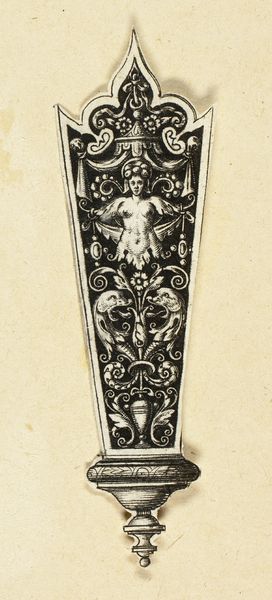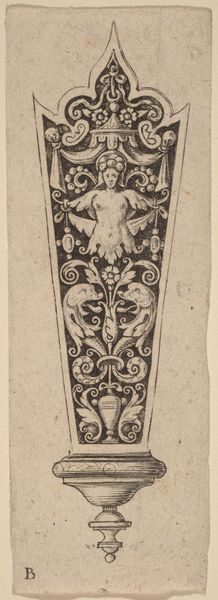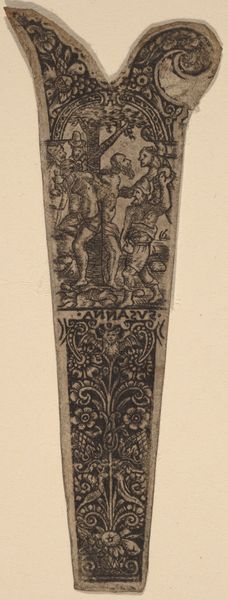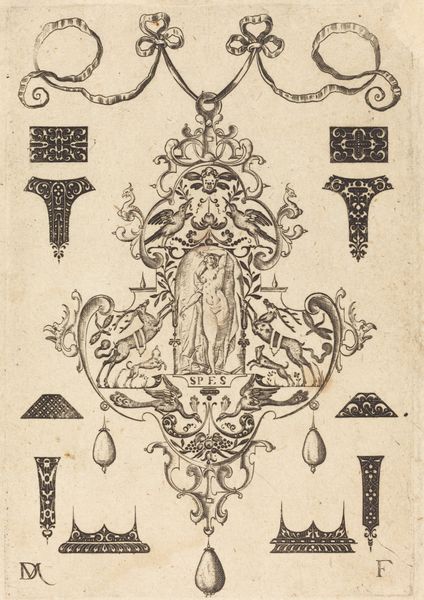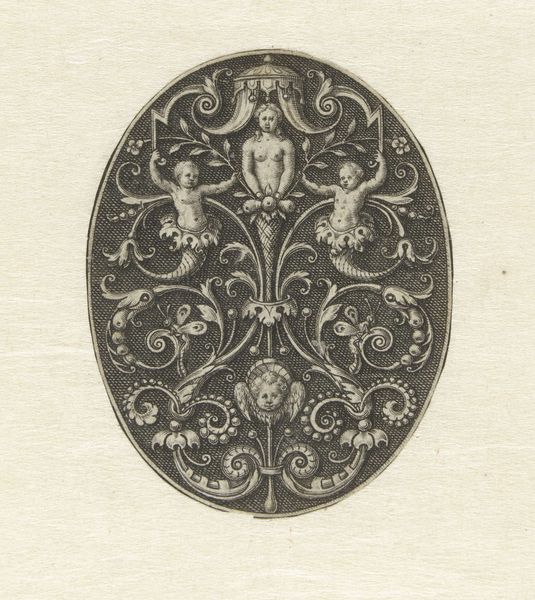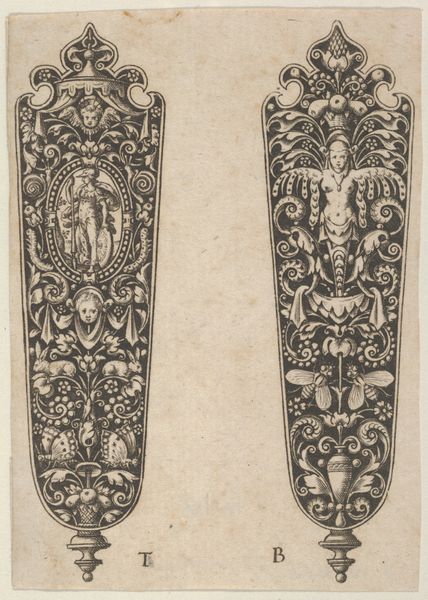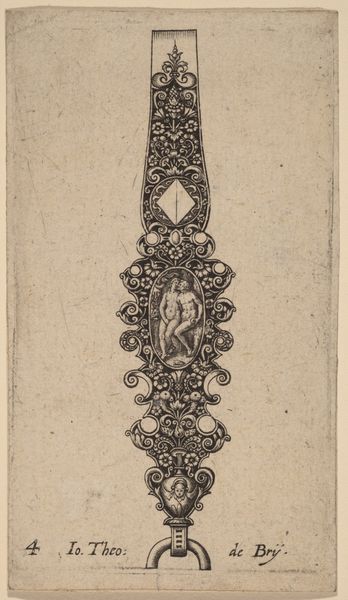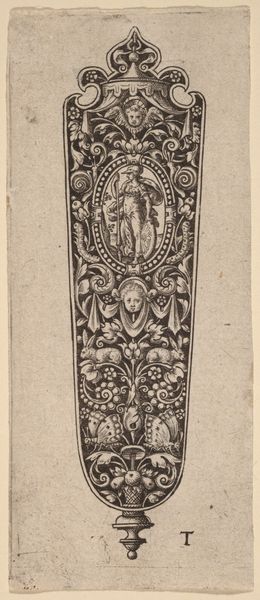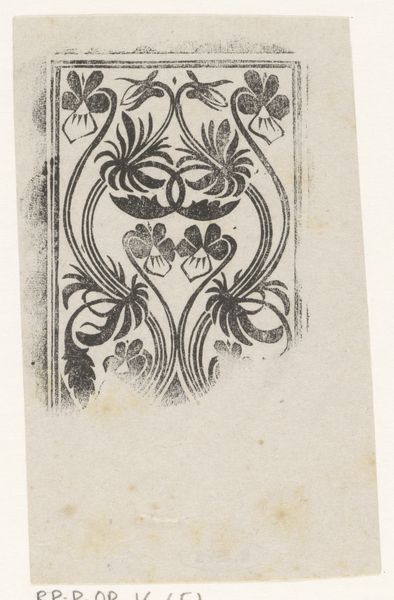
drawing, print, paper, engraving
#
pencil drawn
#
drawing
#
aged paper
#
light pencil work
# print
#
old engraving style
#
paper
#
personal sketchbook
#
old-timey
#
19th century
#
golden font
#
engraving
#
historical font
#
columned text
Dimensions: 84 × 23 mm (image/sheet, trimmed within platemark)
Copyright: Public Domain
Curator: We’re looking at Theodor de Bry’s engraving, "Knife Handle (Lucretia)," circa 1588. It’s currently held at the Art Institute of Chicago. Editor: My first thought is how incredibly detailed this small drawing is! It has an almost unsettling precision in its representation of classical themes. The use of stark black and white gives it a dramatic quality. Curator: Indeed. De Bry was a master engraver, and this piece exemplifies his skill. It’s part of a series he created depicting various knife handle designs, reflecting the fashion for ornamental weaponry during the late Renaissance. The subject matter pulls directly from classical sources. Editor: Lucretia, yes? Her story is ripe for critical interrogation. She’s often valorized for her suicide following her rape, but that glorification conveniently erases the violence enacted against her. What does it mean to elevate her self-destruction in the name of honor, especially when it reinforces patriarchal structures of shame? Curator: It's vital to recognize that this was a period where classical virtues were being reinterpreted and redeployed to uphold contemporary power structures. Lucretia's chastity and sacrifice were held up as ideals, especially for women in the noble classes. Editor: It’s almost like a cautionary tale. I see the engraving less as admiration and more as an instrumentalization of her tragedy. Her body is essentially repurposed into a decorative object for a weapon. Curator: I see your point. However, this piece was intended to serve as inspiration. These handles were objects intended for display, and as statements of personal refinement and knowledge of classical lore. Editor: That just highlights how insidious the whole thing is! Refinement built on violent appropriations? Curator: Considering De Bry’s other works, which included detailed illustrations of the early colonization of the Americas, and the power imbalances inherent in such endeavors, one may indeed wonder about his wider perspectives. Editor: Right, and let's remember how the object itself—a knife—suggests aggression. So the very tool this handle adorns has the potential for violence, cloaked in virtuous imagery. Curator: It gives you a lot to think about. Editor: Absolutely. It’s a small image, but the questions it provokes are huge.
Comments
No comments
Be the first to comment and join the conversation on the ultimate creative platform.
